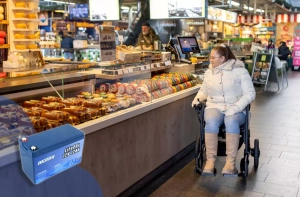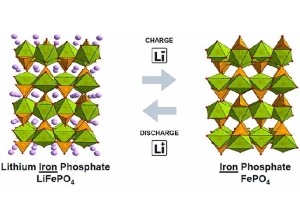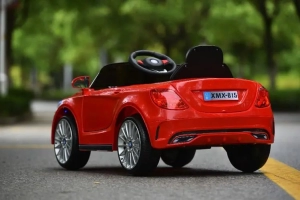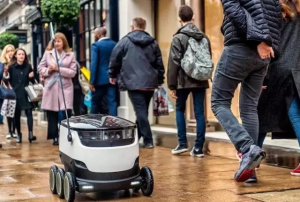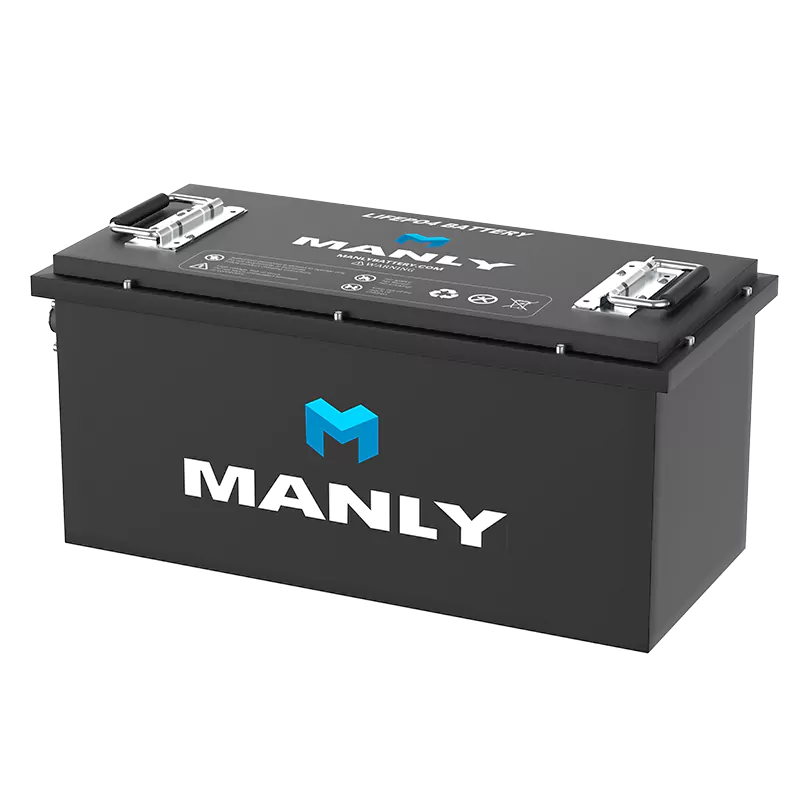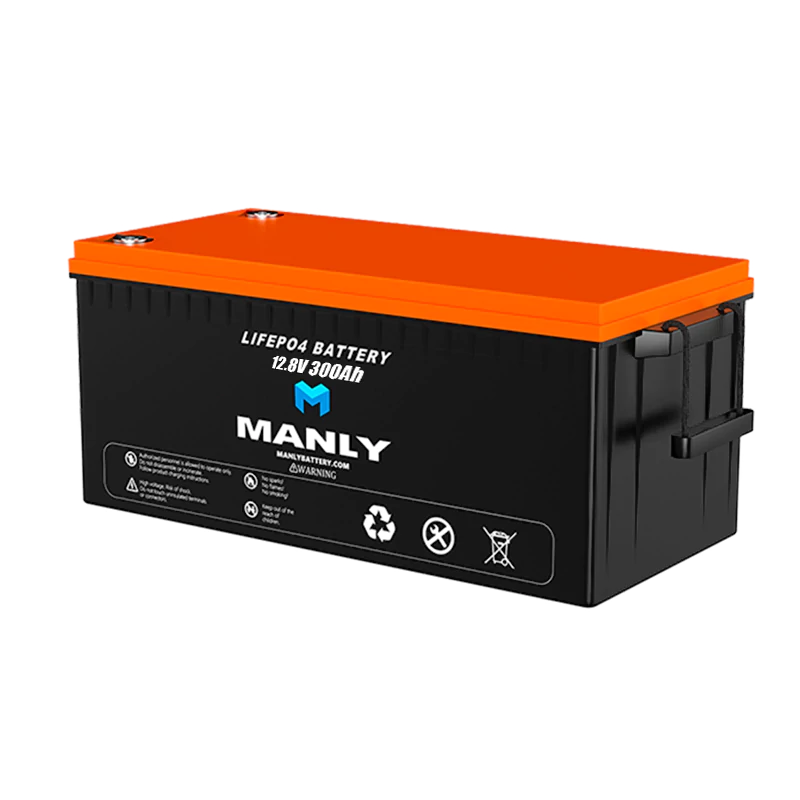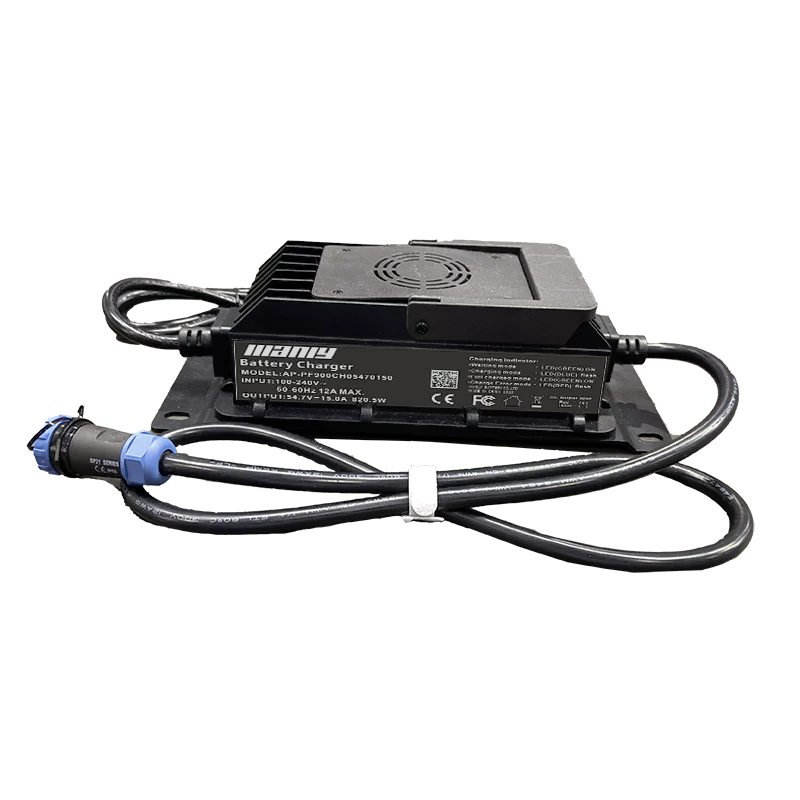The 28 Best Humanoid Robots in 2025
Table of Contents
- The 28 Best Humanoid Robots in 2025
- Understanding Humanoid Robots: An Insight into Robotics Evolution
- The Current Applications of Humanoid Robots Across Industries
- Discover the 26 Best Humanoid Robots of 2024
- 1. AMECA: A Masterpiece by Engineered Arts
- 2. ALTER 3: The Collaborative Creation from Osaka University and Mixi
- 3. ARMAR-6: The Technological Marvel from Karlsruhe Institute of Technology
- 4. Tesla's Optimus Gen2: Revolutionizing Humanoid Robotics
- 5. APOLLO: Apptronik's Advanced Humanoid Creation
- 6. BEOMNI by Beyond Imagination: Redefining Human-Robot Interaction
- 7. ATLAS: Boston Dynamics' Robotic Achievement
- 8. DIGIT: Agility Robotics' Innovation in Motion
- 9. JIAJIA: China's University of Science and Technology's Humanoid Wonder
- 10. ERICA: A Glimpse into the Future by Hiroshi Ishiguro Laboratories
- 11. KIME: The Cutting-Edge Humanoid from Macco Robotics
- 12. NADINE: Nanyang Technological University's Human-Like Robot
- 13. NAO: A Softbank Robotics Phenomenon
- 14. OCEANONE from Stanford Robotics Lab: The Underwater Explorer
- 15. PEPPER: Softbank Robotics' Friendly Humanoid
- 16. PROMOBOT: The Face of New-Age Customer Service
- 17. ROBONAUT 2: The NASA and General Motors Collaboration
- 18. GRACE: Awakening Health's Contribution to Caregiving Robots
- 19. ROBOTHESPIAN: A Theatrical Marvel by Engineered Arts
- 20. SOPHIA: Hanson Robotics' Iconic Humanoid Robot
- 21. SURENA IV: University of Tehran's Robotic Innovation
- 22. T-HR3: Toyota's Humanoid Robot for a Better Tomorrow
- 23. WALKER X: UBTECH Robotics' Step into Advanced Robotics
- 24. PHOENIX: Sanctuary AI's Contribution to the Humanoid World
- 25. EVE: 1X's Vision of Tomorrow's Companion
- 26. ASIMO: Honda's Trailblazing Humanoid Robot
- 27. Figure 2 Humanoid Robot
- Key Features:
- Applications:
- Isaac Humanoid Robot: A New Generation of AI-Powered Innovation
- Future of Humanoid Robotics:
- Trends and Predictions in the Humanoid Robot Market
- Unveiling the Future: The Progressive World of Humanoid Robots
- The Power Behind Humanoid Robots: Advances in Battery Technology
- Learn More About Battery
Understanding Humanoid Robots: An Insight into Robotics Evolution
Humanoid robots, fascinating creations that closely resemble human form and behavior, sit at the exciting crossroads of artificial intelligence, robotics, and human-like attributes. These robots are engineered to mimic real human expressions, interactions, and movements, making them an increasingly vital presence across various industries.The roots of humanoid robotics trace back to the 1960s, with American scientist Joseph Engelberger pioneering the "Three Laws of Robotics." This conceptual foundation laid emphasis on the principles of robot safety and human-robot interactions, igniting interest in the safe development of robots and setting the stage for the evolution of humanoid robots. Since then, leaps in AI and robotics technology have significantly transformed these robots, enhancing their appearance and capabilities.Today's humanoid robots are equipped with sophisticated technologies such as cameras, sensors, deep learning algorithms, neural networks, and natural language processing capabilities. These features enable them to engage in complex interactions and perform a wide array of tasks. Humanoid robots are generally classified into two categories: service robots and industrial robots. Service robots are often found in homes and businesses, performing duties like housekeeping and logistics delivery. Industrial robots, on the other hand, are deployed in manufacturing settings, handling tasks such as operations, maintenance, and inspection.The integration of artificial intelligence has been a game-changer in the development of humanoid robots. These robots are programmed to comprehend human language and commands and execute tasks accordingly. Advanced AI technologies have honed humanoid robots' skills in understanding human behaviors and needs, thus improving their interaction with people.Humanoid robots have versatile applications in fields such as healthcare, education, and entertainment. In healthcare, they contribute to surgical procedures and rehabilitation training. In educational settings, they assist in teaching and supporting students. In the entertainment industry, humanoid robots have found roles in concerts, movies, and more.Humanoid robots are more than just machines with human-like appearances; they are intricately designed to either replace or assist human labor, embodying traits that align with human characteristics. As technology continues to progress and needs evolve, the role and applications of humanoid robots are expanding, offering exciting possibilities and innovations.
The Current Applications of Humanoid Robots Across Industries
The world of humanoid robotics, previously limited to prototypes and experimental phases, is currently undergoing a remarkable transformation. These human-like robots are transitioning from futuristic concepts to practical tools in our everyday lives, marking a new era in robotics.Diverse Applications Across Industries
- Hospitality: Robots like Kime are revolutionizing customer service in Spain, serving drinks and snacks at automated kiosks and acting as hotel concierges, infusing technology into traditional hospitality roles.
- Education: Humanoid robots such as Nao and Pepper are becoming increasingly influential in educational environments. They support content creation and teach programming, providing students with an interactive and engaging learning experience.
- Healthcare: In the medical field, humanoid robots assist in surgeries with precision, relay patient information, and monitor vital signs, thereby enhancing the effectiveness and safety of healthcare procedures.
- Industrial Manufacturing: In manufacturing, humanoid robots demonstrate their versatility by handling various tasks on production lines, including welding and assembly, showcasing their adaptability in industrial settings.
- Public Services: Humanoid robots are also venturing into public services, such as police and firefighting, performing high-risk or labor-intensive tasks that may be challenging for humans.
Discover the 26 Best Humanoid Robots of 2024
The world of humanoid robots is diverse and ever-expanding. Here, we introduce 25 cutting-edge humanoid robots, each exemplifying the ingenious integration of AI, machine learning, and advanced robotics.
1. AMECA: A Masterpiece by Engineered Arts
Ameca, designed by Engineered Arts, represents a significant leap forward in humanoid robotics. This robot is not just a showcase of technological prowess but also a step closer to human-robot interaction. It’s engineered with advanced AI and machine learning capabilities, enabling it to mimic human facial expressions and gestures closely. Ameca's sensors are highly sophisticated, allowing for accurate movement tracking, facial recognition, and voice recognition. This makes Ameca an ideal platform for research in human-robot interaction, exploring the boundaries of empathy and emotional connection in robotics. Its design, focusing on human-like movements and interactions, positions it perfectly for roles in customer service, therapy, and education, where understanding and mimicking human behavior is crucial. The potential applications of Ameca in these fields are vast, from serving as a customer service representative to assisting in therapeutic settings or as an educational tool.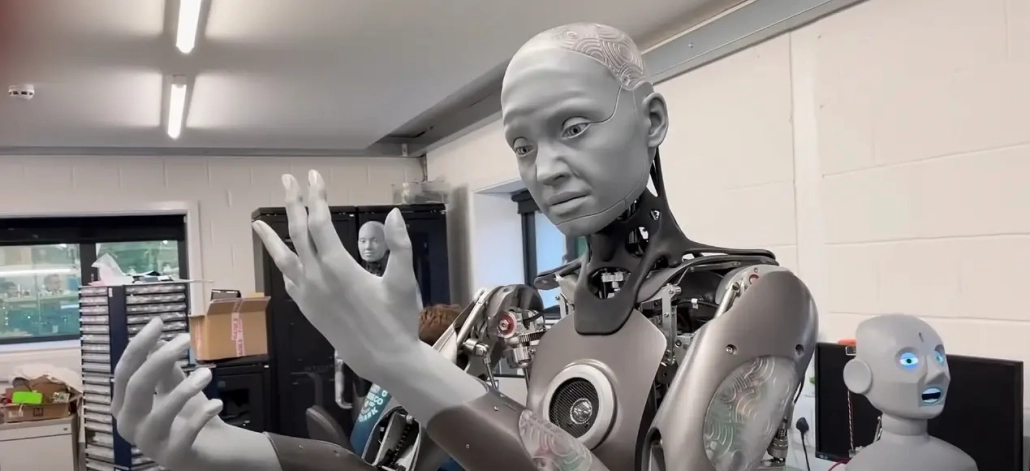

2. ALTER 3: The Collaborative Creation from Osaka University and Mixi
Alter 3 is a remarkable humanoid robot born from the collaboration between Osaka University and Mixi. It stands out in the realm of humanoid robotics for its unique blend of AI and musical talent. Unlike conventional robots, Alter 3 possesses the ability to sing and even conduct orchestras, a testament to its advanced AI neural network and expressive capabilities.This robot is equipped with sophisticated sensors and a complex vocalization system, allowing it to interact with music in a way that's both expressive and responsive. The technology behind Alter 3 includes real-time motion generation based on music and environmental stimuli, enabling it to conduct orchestras with natural, human-like movements.Alter 3's abilities extend beyond entertainment; its development has significant implications for the study of AI and robotics in creative and artistic fields. It represents a new frontier where robots are not just tools for physical tasks but can also engage in cultural and artistic activities, potentially leading to new forms of art and entertainment that blend human creativity with robotic precision and versatility.The creation of Alter 3 also opens up possibilities for exploring human-robot interaction in scenarios where emotional and artistic expression are vital, such as in therapy, education, and collaborative art. By integrating advanced robotics with art and music, Alter 3 is paving the way for a future where robots could play a significant role in enriching human experiences in various domains.

3. ARMAR-6: The Technological Marvel from Karlsruhe Institute of Technology
ARMAR-6, developed by the Karlsruhe Institute of Technology, is a cutting-edge humanoid robot designed specifically for industrial environments. This robot stands out for its ability to use tools and work collaboratively alongside human workers, representing a significant advancement in industrial robotics.The core strength of ARMAR-6 lies in its sophisticated AI technology, which enables it to perform a wide array of tasks, from object handling and grasping to complex maintenance work. This capability is crucial in industrial settings where precision and reliability are paramount. ARMAR-6's design incorporates advanced sensors and machine learning algorithms that allow it to understand and adapt to its environment, making it capable of performing tasks that were previously challenging for robots, such as delicate assembly work or machinery maintenance.Moreover, ARMAR-6 has been designed with human-robot collaboration in mind. It features safety mechanisms and user-friendly interfaces that enable seamless interaction with human workers, enhancing productivity and reducing the risk of injuries in the workplace. This collaboration is not just about working side by side; it's about integrating the robot into the workforce in a way that complements human skills and capabilities.ARMAR-6 represents a significant step towards the future of industrial robotics, where humanoid robots not only perform repetitive tasks but also bring value through their adaptability, precision, and ability to work in harmony with human workers. Its development signals a shift in how we think about robots in industrial settings, moving towards a future where they are integral partners in the manufacturing and maintenance processes.ring AI technology for object grasping and maintenance tasks, ARMAR-6 represents the practical applications of robots in the workforce.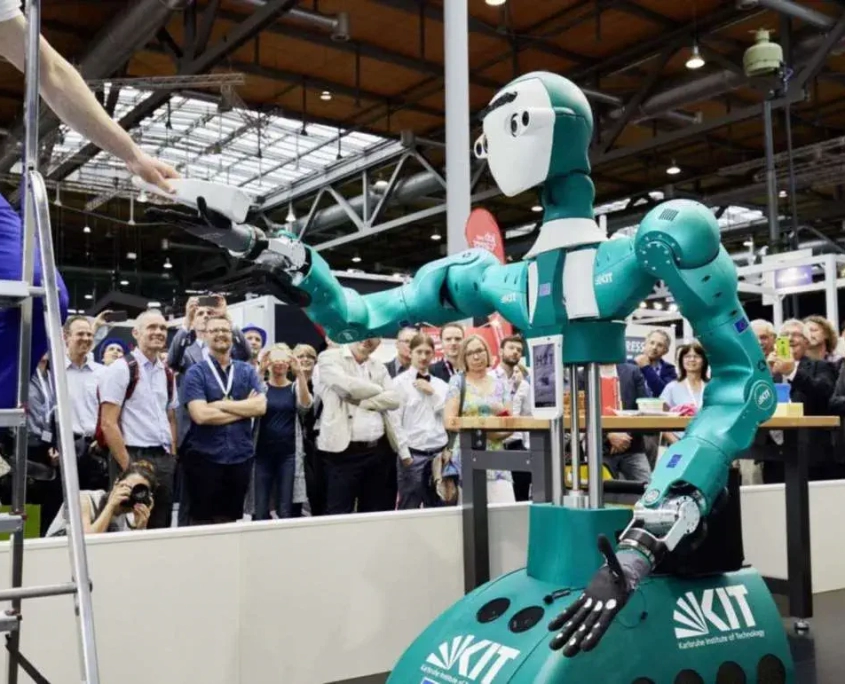


4. Tesla's Optimus Gen2: Revolutionizing Humanoid Robotics
The unveiling of Tesla's Optimus Gen2 humanoid robot on December 13 represents a groundbreaking moment in the field of robotics. This latest model from Tesla showcases substantial improvements over its predecessor, focusing on enhanced flexibility, weight reduction, and more human-like movements.Optimus Gen2 is a testament to Tesla's commitment to pushing the boundaries of robotic capabilities. It boasts life-like hand movements and a sophisticated design that enables it to perform tasks with precision akin to human dexterity. This level of precision is critical, especially for tasks that require a high degree of accuracy and finesse, marking a significant leap from the more mechanical movements typically associated with robots.In terms of mobility and balance, the Gen2 model shows remarkable improvements. Tesla reports a 30% increase in walking speed and a notable reduction in weight by 10 kg, enhancing the robot's agility and efficiency. These improvements make Optimus Gen2 more adaptable to a variety of tasks and environments.Elon Musk's vision for the Optimus Gen2 is ambitious, foreseeing its widespread use in Tesla's manufacturing processes and beyond. The potential applications of this robot are vast, ranging from replacing manual labor in dangerous or repetitive tasks to performing domestic chores. This aligns with Musk's broader vision of integrating advanced humanoid robots into everyday life, signifying a major development in the field of artificial general intelligence (AGI).Optimus Gen2's development indicates a future where humanoid robots could become common in various sectors, potentially transforming the way we work and interact with technology. Its advancements in weight, flexibility, and movement open up new possibilities for robotic applications, both in industrial settings and in daily life.
October 2024 Update: Tesla Optimus Unveiled New Capabilities at "We, Robot" Event
On October 11, 2024, at the "We, Robot" event held at Warner Bros. Discovery Studio in Los Angeles, Tesla showcased new advancements and features of its Tesla Optimus humanoid robot. The highlight of the event was Elon Musk's announcement about the future pricing of Optimus, indicating that the Optimus Tesla price could be as low as $20,000 to $30,000 in the coming years. This significant price reduction is aimed at making the robot more accessible to both industrial and household customers, potentially transforming it into a mass-market product.During the event, the Tesla Optimus humanoid robot actively engaged with the audience, demonstrating new levels of social interaction and task automation. The robots were seen serving coffee, taking photos with attendees, and even performing group dances to showcase their refined movement capabilities. Tesla also unveiled a video showing Optimus performing household chores, such as retrieving packages from the porch, watering plants, and interacting with various home environments. This demonstration marked a clear step forward in Musk’s vision of integrating humanoid robots into everyday domestic settings.Elon Musk emphasized that the Optimus Tesla price would continue to drop as the production scale increases, driven by Tesla’s unique approach of integrating components from its existing electric vehicles. Key parts such as batteries, electronic systems, and AI modules are being shared across both its automotive and robotics divisions, significantly reducing manufacturing costs. According to Musk, Tesla plans to begin small-scale production of Optimus by early 2025, with the goal of deploying thousands of units in Tesla's factories by the end of that year. By 2026, the company aims to increase production dramatically and make the Tesla Optimus robot available to external customers, paving the way for widespread adoption.These updates indicate a major shift in the commercialization of humanoid robots. With its enhanced flexibility, agility, and affordability, Tesla Optimus is poised to redefine the robotics market. If Musk’s ambitious predictions hold true, Optimus could not only transform industries such as manufacturing and logistics but also find its way into homes, offering services from basic housekeeping to personalized interactions. This strategic development, along with the reduced Optimus Tesla price, solidifies Tesla's position as a leader in the rapidly evolving field of humanoid robotics.
5. APOLLO: Apptronik's Advanced Humanoid Creation
Apptronik's Apollo, following the footsteps of its predecessor Astro, is designed with a focus on enhancing efficiency in warehouse and plant operations. This humanoid robot is a powerhouse in material handling, capable of lifting and carrying items up to 55 pounds, which is a substantial load for robots of its kind.Apollo's design incorporates advanced technology that enables it to operate seamlessly in dynamic and busy environments. One of its key features is the impact zone detection technology, which allows Apollo to identify and react to moving objects and people around it. This feature is crucial for safety in environments where human-robot interaction is frequent.Another standout aspect of Apollo is its swappable battery system. This feature ensures continuous operation without significant downtime for charging, a critical factor in maintaining productivity in industrial settings. The swappable batteries allow for quick replacement, keeping Apollo operational around the clock if necessary.Designed with versatility in mind, Apollo can adapt to various tasks within warehouse and plant settings, from order picking to material transport. Its ability to carry substantial weight, coupled with its navigational and safety features, makes it an invaluable asset in these environments.Furthermore, Apollo represents the growing trend of using humanoid robots for more than just repetitive tasks. Its design caters to the need for robots that can work alongside humans, enhancing efficiency while maintaining safety standards. As we move forward, the capabilities of robots like Apollo are expected to expand, playing a significant role in the future of logistics and manufacturing operations.
6. BEOMNI by Beyond Imagination: Redefining Human-Robot Interaction
Beomni, a groundbreaking creation from Beyond Imagination, is redefining the capabilities of remotely controlled humanoid robots. Operated through VR headsets and wearables, Beomni seamlessly integrates AI to learn and execute a variety of tasks. Its primary aim is to revolutionize elder care, providing assistance and companionship with a human touch. Additionally, Beomni is designed to handle tedious and repetitive jobs across various industries, showcasing its versatility.What sets Beomni apart is its potential to create a more interactive and immersive remote working experience. This is particularly relevant in the healthcare sector, where the robot can perform tasks usually requiring human presence, such as patient care and monitoring, thus offering a new dimension to telehealth services. Beomni's advanced control system, combined with AI, allows it to perform complex tasks with precision, making it a valuable asset in scenarios where human expertise is needed but physical presence is challenging.Beomni's development represents a significant step towards more interactive and versatile humanoid robots, capable of bridging the gap between human skills and the efficiency of robotic systems. As we move forward, Beomni could play a crucial role in transforming how we approach remote assistance, particularly in healthcare and elder care, offering a blend of human empathy and robotic efficiency.
7. ATLAS: Boston Dynamics' Robotic Achievement
Atlas, developed by the renowned robotics company Boston Dynamics, stands as a pinnacle of achievement in humanoid robotics. This robot is known for its extraordinary agility and mobility, capable of moving at speeds over 5 miles per hour and performing complex maneuvers such as backflips. What makes Atlas a marvel in robotics is its intricate blend of hardware and software: it is equipped with depth sensors, 28 hydraulic joints, and three onboard computers, enabling it to exhibit human-like agility and balance.Atlas serves primarily as a research and development tool, providing valuable insights into the possibilities of humanoid movement and balance. Its advanced design allows it to navigate complex terrains and perform tasks that require a high degree of coordination and physical ability. The technology behind Atlas includes state-of-the-art motion control systems and real-time environmental adaptation algorithms, making it capable of handling unpredictable and challenging scenarios.The potential applications of Atlas extend beyond research; it could be utilized in scenarios where human safety is at risk, such as search and rescue operations, disaster response, and other high-risk environments. Its ability to move quickly, jump over obstacles, and maintain balance in uneven terrain makes it an ideal candidate for tasks that are too dangerous or inaccessible for humans.Atlas’ development signifies a significant leap in robotics, pushing the boundaries of what humanoid robots can achieve in terms of movement and interaction with their environment. As technology progresses, Atlas could pave the way for the development of more advanced humanoid robots, capable of assisting humans in a variety of challenging and dynamic settings.
8. DIGIT: Agility Robotics' Innovation in Motion
Digit, a highly innovative creation from Agility Robotics, is tailored for logistics and package handling tasks. This humanoid robot excels in environments such as unloading trailers and moving packages, showcasing a blend of advanced robotics and practical utility. Digit features fully functioning limbs capable of executing complex movements like crouching and squatting, adjusting its center of gravity as needed for various tasks.One of the key technologies in Digit is its surface plane-reading sensors. These sensors enable Digit to effectively navigate through environments, ensuring efficient pathfinding and avoiding obstacles. This capability is crucial in logistics environments where the robot needs to maneuver around tight spaces and handle packages of varying sizes and weights.Digit's design focuses on optimizing the efficiency of package handling processes. Its ability to adjust its center of gravity allows for safely carrying and moving heavy loads, which is a game-changer in warehouse settings. Digit's development represents an important step towards automating tasks in the logistics industry, potentially reducing labor costs and increasing efficiency in package sorting and handling.Moreover, Digit’s humanoid form allows it to seamlessly integrate into environments designed for human workers, reducing the need for extensive modifications to existing infrastructure. As the demand for faster and more efficient package handling grows, Digit stands out as a solution that combines the adaptability and dexterity of human workers with the efficiency and endurance of robotic technology.
9. JIAJIA: China's University of Science and Technology's Humanoid Wonder
Jiajia is an exceptional humanoid robot developed by the University of Science and Technology of China. It represents a significant milestone in humanoid robotics with its human-like appearance and interactive capabilities. Designed with features modeled after real students, Jiajia breaks new ground in the field of humanoid robotics by focusing on lifelike interaction and communication.Jiajia's development centers on creating a robot that can engage in naturalistic and interactive communication, making it a potential game-changer in customer service, education, and as a social companion. With its realistic appearance, including lifelike skin and hair, Jiajia can mimic human facial expressions and engage in conversations with a level of realism that is unprecedented in Chinese robotics.The interactive capabilities of Jiajia are not just limited to basic communication. The robot is equipped with advanced AI that allows it to understand and respond to complex human emotions and cues. This makes Jiajia particularly suitable for roles where empathetic and nuanced interaction is crucial, such as in elderly care or as a guide in public spaces.Jiajia's development reflects the growing trend in humanoid robotics to create machines that not only perform tasks but also interact and communicate in a manner that is indistinguishable from humans. As technology advances, Jiajia could play an increasingly significant role in various sectors, offering a glimpse into a future where robots and humans coexist and interact seamlessly.
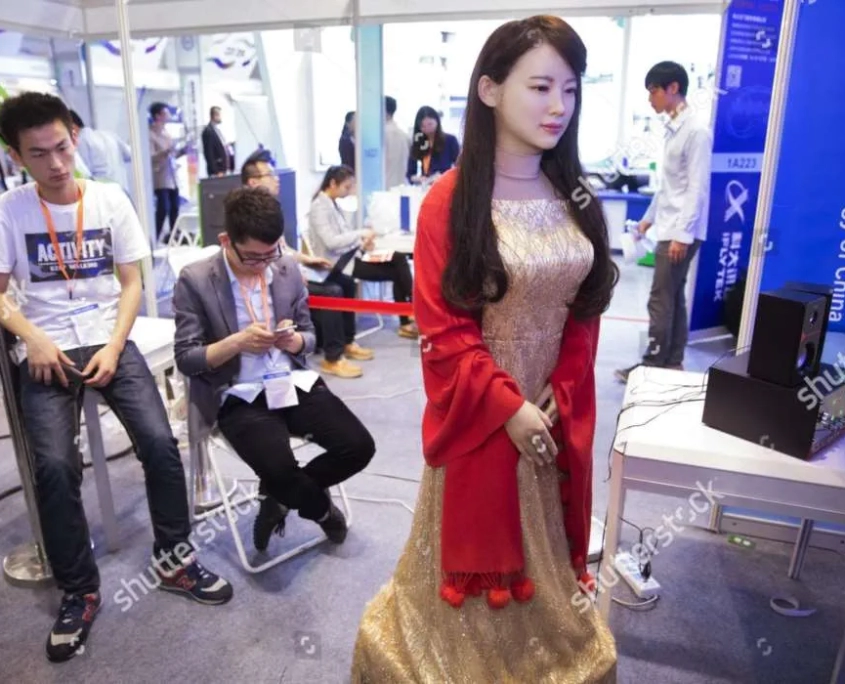
10. ERICA: A Glimpse into the Future by Hiroshi Ishiguro Laboratories
ERICA, developed by Hiroshi Ishiguro Laboratories in Japan, stands as a testament to the advanced capabilities of humanoid robots in simulating human-like interaction. Known for her highly realistic appearance and sophisticated conversational abilities, ERICA sets a new standard in the field of humanoid robotics.ERICA's design goes beyond mere physical resemblance to humans. She is equipped with features that enable natural facial expressions and voice intonation, closely mirroring human communication nuances. This level of sophistication in ERICA's design allows her to engage in conversations that feel remarkably lifelike and intuitive.The technology behind ERICA includes cutting-edge AI algorithms that enable her to process and respond to visual, emotional, and conversational data. This makes ERICA not just a robot but a highly interactive platform that can be used in various settings where human-like interaction is valued, such as customer service, therapy, and educational roles.One of the unique aspects of ERICA is her ability to simulate empathy and emotional intelligence, making her interactions with humans more engaging and meaningful. This feature positions ERICA as a potential companion in healthcare settings, where she can provide comfort and assistance to patients, or in educational environments where she can offer personalized learning experiences.ERICA's development is a significant leap forward in human-robot interaction, showcasing the potential of humanoid robots to not only perform tasks but also to connect and communicate with humans on a deeper level. As humanoid robotics continue to evolve, ERICA represents a glimpse into a future where robots are an integral part of our social and professional lives.11. KIME: The Cutting-Edge Humanoid from Macco Robotics
KIME, developed by Macco Robotics, is a unique addition to the world of humanoid robots, specializing in the hospitality industry. As a robotic bartender, KIME is designed to efficiently serve a variety of items, showcasing the potential of humanoid robots in customer service and hospitality settings.What sets KIME apart is its integration of advanced technologies to enhance the customer experience. It features a user-friendly touchscreen for ordering, a built-in payment system, and the capability to recognize regular customers. This level of personalization and automation makes KIME not just a novelty but a functional asset in bars and restaurants, capable of handling high-volume service with consistency and efficiency.KIME's ability to mix and serve drinks, coupled with customer recognition, illustrates the growing trend of humanoid robots being used to augment human capabilities in service industries. The robot's design focuses on creating an engaging interaction with customers, making it a point of attraction in any establishment.Moreover, KIME's application in the hospitality sector is an example of how humanoid robots can be tailored to specific industry needs. Its success in efficiently serving customers and managing transactions hints at broader implications for the use of humanoid robots in various service-oriented businesses, including retail, tourism, and event management.The development and deployment of KIME mark an exciting advancement in the field of humanoid robotics, demonstrating how these machines can be specialized to improve service delivery and customer experience in the hospitality industry.
12. NADINE: Nanyang Technological University's Human-Like Robot
Nadine, developed at Nanyang Technological University, is a remarkable social humanoid robot with advanced interactive capabilities. She features lifelike skin, hair, and upper body movements, making her one of the most realistic humanoid robots in terms of appearance. Nadine's design allows her to engage in natural human-like interactions, which is crucial for her roles in customer service and elder care.One of the key aspects of Nadine is her ability to recognize faces, speech, gestures, and objects. This makes her exceptionally well-suited for social interactions in various settings. In customer service, Nadine can provide personalized assistance, responding to individual needs and preferences of customers. In elder care, her realistic appearance and interactive capabilities enable her to provide companionship and support, helping to improve the quality of life for seniors.Nadine's development represents a significant advancement in humanoid robotics, particularly in creating robots that can seamlessly integrate into social environments. Her ability to process and respond to complex human cues and emotions opens up possibilities for humanoid robots to serve in roles that require empathy, understanding, and social interaction.As technology progresses, Nadine's applications could expand to include more diverse social roles, such as in education, healthcare, and hospitality. Her development underscores the potential of humanoid robots to not just perform tasks but also to connect and engage with humans on a social and emotional level. Nadine is a glimpse into a future where humanoid robots could become an integral part of our social fabric, enhancing human interactions in various sectors.
13. NAO: A Softbank Robotics Phenomenon
NAO, developed by SoftBank Robotics, is a versatile humanoid assistant widely used in healthcare, education, and research. Standing as a testament to the advancements in humanoid robotics, NAO has become a popular figure in these sectors due to its interactive capabilities and user-friendly design.In healthcare, NAO serves as a supportive assistant, helping with therapeutic and educational activities. It's particularly effective in working with children, using its engaging and approachable design to assist in various therapies and learning activities. In educational settings, NAO is used as an interactive tool for teaching programming, languages, and other subjects, making learning more engaging and interactive.NAO is equipped with object recognition technology, directional microphones, speakers, and touch sensors, enhancing its interaction capabilities. It can speak up to 20 languages, which makes it an excellent tool for language learning and international educational programs.The robot's popularity in educational and healthcare settings is due to its ability to engage and interact with people in a manner that is both entertaining and educational. NAO's design and technology make it an ideal platform for introducing robotics and AI concepts to students and for providing companionship and assistance in healthcare environments.SoftBank Robotics' NAO is a shining example of how humanoid robots can positively impact various sectors. It demonstrates the potential of robotics in enhancing education, providing therapeutic support, and aiding in research and development in various fields. As technology advances, NAO's applications could expand, making it an even more invaluable tool in education, healthcare, and beyond.
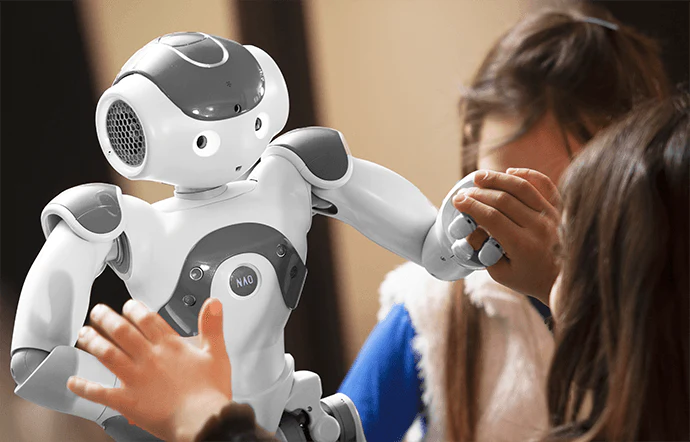
14. OCEANONE from Stanford Robotics Lab: The Underwater Explorer
OceanOne, developed by Stanford Robotics Lab, represents a groundbreaking achievement in the field of underwater exploration and robotics. This diving robot is specifically designed to explore and operate in deep-sea environments, reaching depths that are often inaccessible or too dangerous for human divers.OceanOneK, the latest version of OceanOne, is equipped with advanced AI and haptic feedback systems, allowing it to handle a variety of underwater tasks with precision and sensitivity. This includes operating tools and equipment in challenging underwater conditions, making it an invaluable asset for scientific research, archaeological exploration, and deep-sea resource extraction.One of the most significant capabilities of OceanOne is its ability to provide haptic feedback to its operators. This feature allows users to feel what the robot is touching, giving them a sense of presence and enabling more delicate and precise operations. Combined with AI, OceanOne can make autonomous decisions based on environmental data, enhancing its efficiency and reliability in underwater exploration.OceanOne's ability to dive to depths of up to 1,000 meters opens new frontiers in oceanic exploration. It can access areas previously unreachable, revealing hidden aspects of the underwater world and contributing valuable data for scientific research. This robot has the potential to transform our understanding of the deep sea, offering insights into marine biology, geology, and other ocean-related fields.OceanOne's development is a significant step towards safer and more efficient underwater exploration. It represents the future of robotics in challenging environments, showcasing how advanced technology can extend human capabilities and enable us to explore new frontiers.
15. PEPPER: Softbank Robotics' Friendly Humanoid
Pepper, another innovative humanoid robot from SoftBank Robotics, is designed to operate in various interactive roles, particularly in healthcare, education, and hospitality. This robot is known for its ability to recognize faces and track human emotions, making it an ideal companion in environments where engaging and personalized interaction is crucial.In the healthcare sector, Pepper is used to assist both patients and healthcare providers. Its empathetic AI allows it to interact with patients, providing companionship, entertainment, and assistance in navigational tasks within healthcare facilities. In educational settings, Pepper enhances learning experiences by interacting with students and assisting educators in delivering engaging content.One of Pepper's unique features is its emotion recognition capability. This allows Pepper to respond appropriately to the mood and behavior of individuals, making its interactions more personal and effective. This feature is particularly beneficial in customer service roles within the hospitality industry, where understanding and responding to guest needs is essential.Pepper's design is not only about functionality but also about creating a robot that is approachable and friendly. This makes Pepper a versatile robot that can be employed in various public settings, from retail stores to hotels, where enhancing customer experience is a priority.As technology continues to evolve, Pepper's roles are expected to expand, further integrating this humanoid robot into daily life and various industries. Pepper's development underscores the growing importance of humanoid robots in providing interactive and personalized services, and its success points to a future where robots like Pepper become commonplace in supporting and enhancing human activities.
16. PROMOBOT: The Face of New-Age Customer Service
Promobot, developed by the company of the same name, is a highly customizable humanoid robot designed to function in various service-oriented industries, including hospitality and healthcare. It stands out for its ability to perform a range of tasks, from concierge services to medical assistance, showcasing the multifaceted utility of humanoid robots.In hospitality settings, Promobot can greet guests, provide information, and even assist in check-in processes, enhancing the overall customer experience with its interactive capabilities. It's equipped with advanced AI that allows it to engage in natural conversations, answer queries, and guide guests, making it a valuable asset in hotels, resorts, and other customer-focused environments.In the healthcare sector, Promobot can assist in various ways, such as guiding patients, providing information about medical procedures, and even helping in patient registration processes. Its design is conducive to healthcare environments, where it can navigate autonomously and interact with patients and staff in a friendly and informative manner.Promobot is also capable of integrating with security systems, adding an additional layer of functionality to its already versatile design. This feature makes it suitable for use in environments where security is a priority, such as corporate buildings or public facilities.With its adaptable design and ability to perform a range of tasks, Promobot is a prime example of how humanoid robots can enhance service delivery and customer interaction in various industries. Its development and growing presence in the market reflect the increasing demand for humanoid robots that can provide efficient, interactive, and versatile services.
17. ROBONAUT 2: The NASA and General Motors Collaboration
Robonaut 2, a collaborative creation between NASA and General Motors, is a significant development in the field of humanoid robotics, specifically designed for space missions and industrial applications. As the first humanoid robot to be sent into space, Robonaut 2 marks a milestone in the evolution of robotics technology.Robonaut 2's design focuses on performing tasks that are either too dangerous or too tedious for astronauts. Its capabilities include handling a wide range of tools and interfaces designed for space missions. This makes it an invaluable asset aboard the International Space Station, where it can assist astronauts in both routine and complex tasks, contributing to research and maintenance efforts.In industrial settings, Robonaut 2's application extends to performing precise and repetitive tasks in manufacturing environments. Its dexterity and precision in handling tools and components make it suitable for assembly lines, where it can work alongside human workers to enhance productivity and safety.Robonaut 2 is equipped with advanced sensors, control systems, and dexterous hands, enabling it to perform delicate tasks with a high degree of precision. Its humanoid form allows it to use the same tools and workspaces designed for humans, reducing the need for specialized equipment.The development of Robonaut 2 represents an important step toward the future of collaborative robotics, where robots and humans work together to achieve goals that would be challenging to accomplish independently. Its success in both space and industrial environments showcases the versatility and potential of humanoid robots in various applications, from scientific research to manufacturing.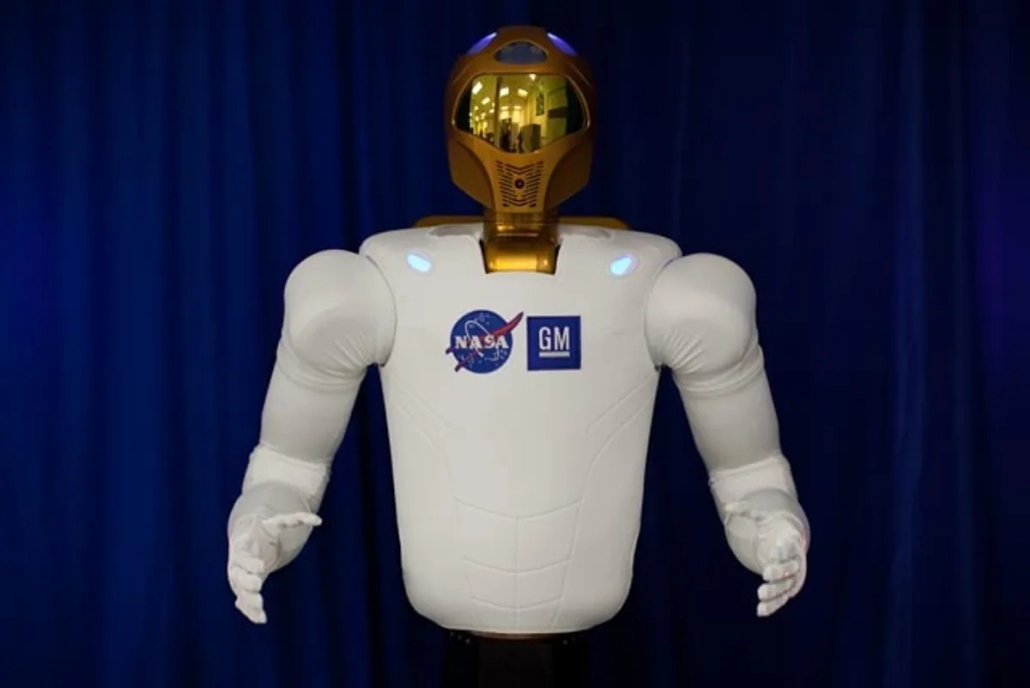

18. GRACE: Awakening Health's Contribution to Caregiving Robots
Grace, a creation by Awakening Health in collaboration with Hanson Robotics and Singularity Studio, is a humanoid robot specifically designed for healthcare applications. She embodies a significant advancement in the field of humanoid robotics, with a focus on empathetic and interactive patient care.One of Grace's most notable features is her empathetic AI platform, which is capable of understanding and responding to patient needs in various healthcare environments. This advanced AI allows Grace to interact in a way that is not only informative but also comforting to patients, making her an ideal companion in settings like hospitals and care homes.Grace is equipped with facial recognition technology and a thermal camera, enabling her to detect emotional states and physical symptoms in patients. This capability allows her to provide personalized care and support, adapting her interactions based on the patient's condition and emotional state.Her role in healthcare extends beyond patient interaction. Grace can assist medical staff by providing patient information, reminding patients of medication schedules, and even helping in monitoring patient health. Her presence in healthcare settings can enhance the overall patient experience, providing a sense of companionship and support that is crucial in medical care.Grace represents the growing importance of humanoid robots in healthcare, not just as tools for medical tasks, but as beings capable of providing empathy and support. Her development illustrates how advanced robotics and AI can be harnessed to improve patient care and assist healthcare professionals, showcasing a future where humanoid robots play a vital role in the medical field.
19. ROBOTHESPIAN: A Theatrical Marvel by Engineered Arts
RoboThespian, developed by Engineered Arts, is a versatile and interactive humanoid robot designed primarily for entertainment and educational purposes. This robot stands out for its ability to perform in front of crowds and interact with people via telepresence software, making it an innovative tool in both the arts and education.One of RoboThespian's key attributes is its ability to express a wide range of micro-facial expressions and engage in direct eye contact, which creates a more lifelike and engaging interaction with audiences. This capability is especially valuable in educational settings, where RoboThespian can be used as a dynamic teaching aid, capable of captivating students’ attention and delivering content in an interactive manner.In entertainment settings, RoboThespian's performance abilities come to the fore. It can act, recite, sing, and even perform gestures and movements synchronized with audio-visual content. This makes RoboThespian not just a robot but a performer, capable of entertaining audiences in theaters, exhibitions, and events.The development of RoboThespian signifies a leap forward in humanoid robotics, showcasing the potential of robots not just as tools for tasks but as engaging and interactive figures in public spaces. RoboThespian’s adaptability and interactive capabilities make it a prime example of how humanoid robots can be integrated into diverse sectors, including arts, education, and public engagement.As technology advances, we can expect to see more robots like RoboThespian, which blend entertainment with interactivity, enhancing experiences in various public and educational settings.
20. SOPHIA: Hanson Robotics' Iconic Humanoid Robot
Sophia, developed by Hanson Robotics, is one of the most iconic and recognizable humanoid robots in the world. Known for her advanced artificial intelligence and lifelike appearance, Sophia represents a significant breakthrough in humanoid robotics, especially in terms of naturalistic interaction and communication.Sophia is equipped with cutting-edge AI that allows her to process visual, emotional, and conversational data. This advanced technology enables Sophia to interact with humans in a highly realistic and engaging manner. She can recognize faces, maintain eye contact, understand and respond to questions, and exhibit a wide range of human-like expressions.What sets Sophia apart is her ability to engage in meaningful conversations, making her more than just a robotic figure. She can discuss various topics, express opinions, and even tell jokes, which has made her a popular figure in media appearances, interviews, and public speaking events. Sophia's interactive capabilities have been showcased in various international platforms, where she has engaged with politicians, celebrities, and industry leaders.Sophia’s design, including her realistic facial features and expressions, is based on Audrey Hepburn and Hanson Robotics’ founder's wife. This design choice was intended to make her appearance friendly and relatable, which helps in establishing a connection with human interactants.Sophia's development has significant implications for the future of humanoid robotics. She demonstrates the potential for robots to become part of social interactions and conversations, paving the way for future applications in various sectors, including customer service, healthcare, and education. Sophia’s existence challenges the traditional boundaries between humans and machines, opening up discussions about the future role of robots in society.
21. SURENA IV: University of Tehran's Robotic Innovation
Surena IV, developed at the University of Tehran, is a remarkable example of advancements in humanoid robotics. This robot exemplifies significant progress in mobility, manipulation, and interaction capabilities. Surena IV stands out for its ability to use tools effectively and navigate uneven terrain, showcasing the potential of humanoid robots in diverse and challenging environments.One of the key features of Surena IV is its improved hand design, which allows for more precise and dexterous movements. This capability is crucial for tasks that require a high degree of manipulation, such as handling delicate objects or performing tasks that require fine motor skills. The robot’s advanced tracking ability also enables it to interact more effectively with its environment and with people, making it suitable for various applications, from industrial tasks to assisting in daily activities.The development of Surena IV focuses on enhancing humanoid robot mobility. The robot's ability to walk, climb stairs, and navigate uneven surfaces represents a significant technological achievement. This mobility is critical for applications in areas where the terrain or accessibility is challenging, such as in search and rescue missions or in assisting people with mobility impairments.Surena IV's advancements demonstrate the growing capabilities of humanoid robots in performing complex tasks and operating in diverse environments. The robot’s development reflects a broader trend in robotics towards creating machines that can work alongside humans, complementing human abilities and assisting in tasks that are difficult, dangerous, or tedious. Surena IV represents the future potential of humanoid robots in enhancing productivity, safety, and quality of life.
22. T-HR3: Toyota's Humanoid Robot for a Better Tomorrow
The T-HR3, developed by Toyota, is a groundbreaking humanoid robot designed as a remote avatar, controlled by wearable devices. This robot represents Toyota's vision for the future of personal assistance and support, especially in healthcare and household environments.T-HR3's design focuses on mimicking the motions of its human operator, achieved through a sophisticated control system. This system allows the robot to replicate complex human movements with a high degree of accuracy, making it an effective tool for tasks that require precision and delicacy. The wearable control devices enable intuitive operation, allowing users to control the robot as an extension of their own body.One of the most significant applications of the T-HR3 is in healthcare, where it can assist with patient care and support medical professionals. Its ability to be remotely controlled means that healthcare providers can perform certain tasks or provide assistance from a distance, which is particularly valuable in situations where direct human contact may be risky, such as in infectious environments or remote medical services.In addition to healthcare, T-HR3 has potential applications in household settings. Its humanoid form and dexterity make it suitable for a range of domestic tasks, from assisting with household chores to providing support for elderly or disabled individuals. The robot's capability to be controlled remotely also offers the possibility of providing assistance and companionship to those who require it, regardless of the geographical distance.The development of T-HR3 showcases Toyota's commitment to leveraging robotics technology to enhance human life and well-being. It represents a significant step towards the integration of humanoid robots into daily life, offering a glimpse into a future where robots can provide practical and compassionate assistance in both healthcare and home environments.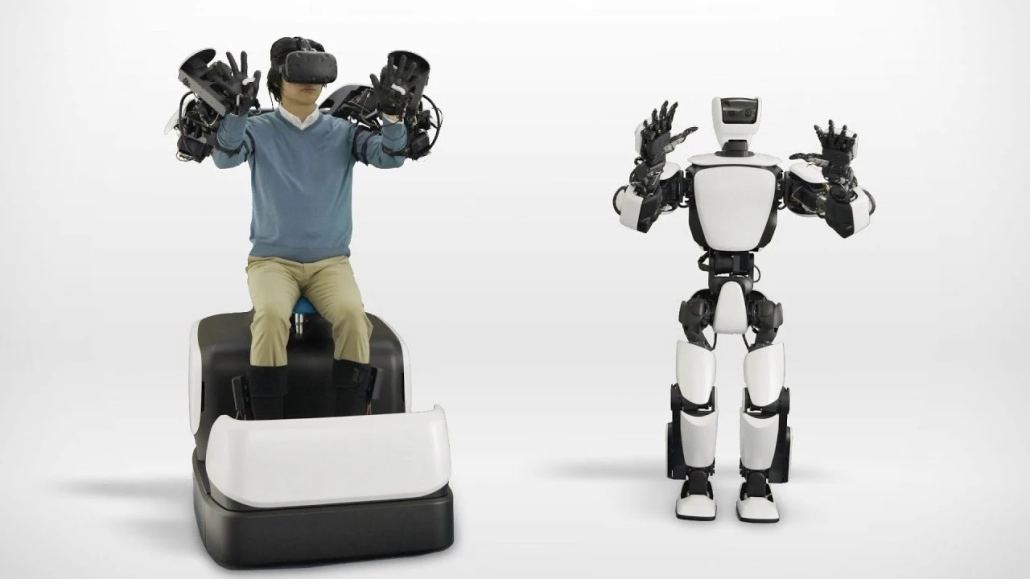

23. WALKER X: UBTECH Robotics' Step into Advanced Robotics
Walker X, developed by UBTECH Robotics, is a highly advanced humanoid robot that showcases significant progress in balance, coordination, and mobility. Designed to operate in domestic settings, Walker X is capable of performing a variety of household tasks, making it an exemplary figure in the future of service robots.One of the key features of Walker X is its enhanced balance and hand-eye coordination. This enables the robot to navigate complex indoor environments, climb stairs, and handle objects with precision. Such capabilities are crucial for a robot designed to assist with daily tasks in a home environment, where adaptability and versatility are essential.Walker X's ability to perform household tasks is not limited to simple chores. It can assist with more complex activities like setting tables, helping with cooking, and even engaging in interactive games and activities. This versatility makes Walker X a valuable companion, especially for individuals who require assistance due to age, disability, or other reasons.In addition to its practical applications, Walker X represents a significant achievement in humanoid robotics. Its development reflects a growing trend in robotics towards creating machines that can seamlessly integrate into human environments and assist with everyday activities. The design and functionality of Walker X illustrate how robots can be more than just tools for specific tasks – they can be integrated members of our living spaces, enhancing quality of life and providing support where it's needed.As technology continues to advance, the potential applications for robots like Walker X are vast. They could transform the way we think about domestic assistance and personal care, offering solutions that combine efficiency, safety, and interactive companionship.
24. PHOENIX: Sanctuary AI's Contribution to the Humanoid World
Phoenix, created by Sanctuary AI, represents a significant advancement in the field of humanoid robotics. Designed for diverse workforce roles, Phoenix is equipped with human-like hands and AI training capabilities, demonstrating the adaptability and potential autonomy of humanoid robots in various industries.One of the standout features of Phoenix is its highly dexterous hands, which are capable of performing intricate tasks that require a high level of precision and finesse. This ability is crucial for roles that traditionally rely on the nuanced skills of human hands, such as assembling delicate components in manufacturing or performing intricate procedures in healthcare settings.In addition to its physical capabilities, Phoenix is also equipped with advanced AI that enables it to learn and improve tasks over time. This learning ability allows Phoenix to adapt to new challenges and environments, making it a versatile tool for businesses looking to integrate robotic technology into their operations.Phoenix's design is focused not only on task execution but also on working collaboratively with human colleagues. Its ability to learn from and adapt to human interactions is a key factor in its potential for widespread adoption in the workforce. This collaborative approach is particularly important in industries where teamwork and adaptability are crucial, such as healthcare, manufacturing, and customer service.The development of Phoenix by Sanctuary AI highlights the growing trend towards creating humanoid robots that can seamlessly integrate into and enhance human work environments. As technology continues to evolve, Phoenix and similar robots are expected to play increasingly significant roles in various sectors, offering solutions that combine human-like dexterity, AI-driven adaptability, and collaborative potential.
25. EVE: 1X's Vision of Tomorrow's Companion
EVE, developed by 1X, is an AI-powered humanoid robot that is making significant strides in the workforce. Designed with strong grippers, panoramic vision cameras, and wheeled mobility, EVE showcases the integration of advanced robotics and AI to learn and improve tasks, demonstrating potential applications in retail, logistics, and security.EVE's strong grippers are a key feature, enabling it to handle a variety of objects, which is particularly useful in logistics for tasks like sorting and transporting goods. Its panoramic vision cameras provide a comprehensive view of its surroundings, allowing for accurate navigation and task execution in complex environments.The wheeled mobility of EVE gives it an edge in terms of movement and speed, making it well-suited for tasks that require quick and efficient navigation, such as patrolling in security settings or moving through large warehouses. The integration of AI allows EVE to learn from its experiences, continuously improving its efficiency and effectiveness in various tasks.In retail environments, EVE can be utilized for stock management, customer assistance, and even as an interactive information point. Its ability to recognize and interact with customers adds a new dimension to the retail experience, blending efficiency with a personal touch.EVE represents a significant advancement in the field of humanoid robotics, with its combination of physical dexterity, advanced vision capabilities, and AI-driven learning. As the capabilities of robots like EVE continue to evolve, they are set to play an increasingly vital role in various industries, enhancing productivity, safety, and customer experience.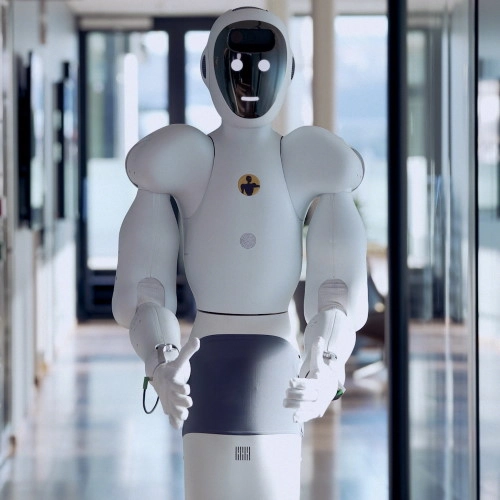

26. ASIMO: Honda's Trailblazing Humanoid Robot
ASIMO, developed by Honda, is one of the most well-known humanoid robots globally, recognized for its pioneering role in advanced robotics and AI integration. As one of the earliest humanoid robots, ASIMO has played a significant part in pushing the boundaries of what is possible in robotics.Known for its bipedal walking ability, ASIMO can run, climb stairs, and even dance, showcasing Honda's commitment to creating a robot that closely mimics human movement and balance. This ability to move in a manner similar to humans has made ASIMO a valuable platform for research and development in humanoid robotics.Over the years, ASIMO's development has contributed significantly to the field, with advancements in mobility, dexterity, and interaction. ASIMO's design includes features such as hand dexterity that allows it to perform tasks like opening a bottle or pouring a drink, and its ability to recognize faces and understand spoken commands.ASIMO’s development has provided valuable insights into how robots can assist in various settings, including helping people with mobility challenges and performing tasks in hazardous environments. Its friendly and approachable design has also made it an effective ambassador for robotics, helping to demystify technology and showcase the potential of robots to positively impact society.Honda’s work on ASIMO has laid a foundation for future developments in humanoid robotics. The learnings from ASIMO continue to influence the design and functionality of newer robots, driving the evolution of robots that are more adaptable, interactive, and capable of working alongside humans in various capacities.27. Figure 2 Humanoid Robot
Figure 2 Humanoid Robot is an advanced AI humanoid robot designed for a variety of complex environments, including industrial applications and human-robot interactions. This new humanoid robot combines cutting-edge robotics and artificial intelligence, making it one of the most promising humanoid robots in the market.Key Features:
- NVIDIA Humanoid Robot Platform: Figure 2 uses NVIDIA's AI computing power, providing enhanced vision processing and real-time decision-making capabilities. This NVIDIA humanoid robot platform allows for more precise movements and improved adaptability in diverse situations.
- BMW Humanoid Robots Collaboration: The robot has been tested in collaboration with BMW humanoid robots to optimize its efficiency in manufacturing and logistics. Its agility and ability to handle complex assembly tasks make it a viable option for the humanoid robot market.
- Futuristic Humanoid Robot Design: Figure 2’s design emphasizes a sleek, futuristic humanoid robot appearance with a fully articulated frame, allowing for fluid motion and dexterity. It also includes a humanoid robotic arm that can grasp objects with human-like precision, making it a valuable tool in environments requiring delicate handling.
- Realistic Humanoid Appearance: The robot’s appearance and fluid movement closely mimic human actions, positioning it as one of the most realistic humanoid robots available. This design approach aims to bridge the gap between human and robot collaboration, making it easier for humans to interact with and trust the robot in various settings.
- Humanoid Robot for Sale in 2024: With its launch expected in 2024, Figure 2 is set to compete as one of the best humanoid robots for industrial and personal use. Its modular build and customizable software make it suitable for different applications, from warehouse automation to educational settings.
Applications:
- Industrial Automation: Figure 2 can perform tasks that are typically handled by robots that replace humans in dangerous or repetitive work environments. Its AI-driven platform allows it to adjust to changing conditions, reducing the need for human intervention.
- Human-Robot Collaboration: This robot is designed to work alongside humans in shared spaces, showcasing the potential for humans and robots working together seamlessly. Its human-like form and ability to respond to voice commands make it a unique addition to the growing field of robots helping humans.
Isaac Humanoid Robot: A New Generation of AI-Powered Innovation
Isaac Robot is a cutting-edge AI humanoid robot that represents the next step in humanoid robotics. Designed with a focus on human-like interaction and seamless integration into various environments, Isaac stands out as one of the most advanced humanoid robots in the market today. This new humanoid robot combines artificial intelligence, high-performance actuators, and a sophisticated design to achieve lifelike movement and interactions.Key Features of Isaac Humanoid Robot:
- Advanced AI Platform: Isaac is built on an NVIDIA humanoid robot platform, leveraging the power of AI to process complex data, recognize human emotions, and respond in real-time. This advanced AI technology enables Isaac to interact with people naturally, making it an ideal choice for environments where human-robot collaboration is essential.
- Realistic Humanoid Design: The humanoid robot face and body structure of Isaac are meticulously crafted to appear welcoming and non-threatening, which is crucial for building trust in settings like customer service, healthcare, and education. Its appearance closely resembles a human, making it one of the most realistic humanoid robots available on the market.
- Customizable and Adaptable: Isaac’s modular design allows for easy customization based on specific needs. Whether it's equipped with additional humanoid robotic arms for delicate tasks or upgraded with the latest AI software, Isaac can adapt to various roles, making it a top contender among the best humanoid robots for industrial and commercial use.
- Human-Like Movement: This futuristic humanoid robot is designed to move with grace and precision. Utilizing state-of-the-art humanoid robot actuators, Isaac can walk, run, and even perform complex actions like lifting objects or navigating through challenging terrains. This lifelike motion positions Isaac as a leader among humanoid robots with artificial intelligence.
- Built for Collaboration: One of the standout features of Isaac is its ability to work alongside humans safely. With integrated sensors and an advanced vision system, Isaac can navigate crowded spaces and assist in repetitive or hazardous tasks, effectively functioning as one of the robots helping humans in both workplaces and public settings.
Applications of Isaac Robot:
- Customer Service: Isaac is being adopted by various industries for use as a customer-facing humanoid robot in retail, hospitality, and healthcare. Its ability to engage in meaningful conversations makes it a valuable asset for improving customer experience.
- Healthcare: With its ability to monitor patients and provide companionship, Isaac is making a name for itself in healthcare settings, offering both emotional support and functional assistance.
- Education: Isaac’s interactive capabilities and natural language processing allow it to be used as a teaching assistant, making learning more engaging for students.
Future of Humanoid Robotics:
Figure 2 represents a significant step forward in the development of real humanoid robots that can perform complex tasks while maintaining a human-like presence. As the humanoid robot market expands, Figure 2 is expected to play a crucial role in shaping the future of robotics, particularly in sectors that require both physical and cognitive skills.By integrating advanced AI, sophisticated design, and real-world testing, Figure 2 is set to become a benchmark for the next generation of humanoid robots in China and around the world. Its development underscores the rapid evolution of humanoid robots with artificial intelligence and their growing role in the modern workplace.Trends and Predictions in the Humanoid Robot Market
The humanoid robotics market is currently riding a wave of exceptional growth. The market, valued at $1.6 billion in 2022, is projected to skyrocket to an astonishing $214.4 billion by 2032. This significant growth is propelled by an increasing appetite for humanoid robots across various sectors, including personal assistance, entertainment, education, and healthcare.Key Drivers of Market Growth- Diverse Applications: The versatility of humanoid robots, capable of tasks ranging from household assistance to participating in complex medical procedures, is a major factor driving their demand.
- Advancements in AI: The evolution of artificial intelligence has been pivotal in enhancing the capabilities of humanoid robots, making them more efficient, interactive, and adaptable.
- Increased Automation: As industries move towards automation, humanoid robots are being seen as viable solutions for tasks that require a level of dexterity and decision-making previously exclusive to humans.
Unveiling the Future: The Progressive World of Humanoid Robots
The humanoid robotics industry, despite facing considerable challenges during the Covid-19 pandemic such as supply chain disruptions and labor shortages, has demonstrated extraordinary resilience. The sector has adapted its manufacturing processes and sustained revenue streams, showing a promising trajectory for the future of robotics.Adapting to Challenges for Continued GrowthRobotics companies have embraced strategic approaches to overcome these challenges and ensure growth. Diversification of suppliers, cultivating strong relationships, and implementing just-in-time manufacturing have been crucial. Additionally, embracing remote work, upskilling the workforce, and leveraging automation have become indispensable strategies for success. Monitoring risks, maintaining buffer stocks, fostering innovation, and industry networking are also pivotal for staying competitive in this evolving market.Emerging Trends in Healthcare and Commercial ApplicationsLooking ahead, the healthcare sector stands out as a key area for humanoid robot deployment. From security roles and pharmaceutical dispensing to patient assistance, humanoid robots are poised to revolutionize healthcare services.Globally, humanoid robots are making strides in commercial applications such as patrol, logistics, and storage. EVE by 1X Technologies is an example of successful deployment in security patrol, while Digit focuses on logistics and storage, aiming for a full market release by 2025.Supportive Policies and Investment Fueling GrowthWith supportive policies, capital investment, and technological advancements, the potential of humanoid robots is only set to expand. Their future commercial applications will likely extend into the service and manufacturing industries. Elon Musk's vision for Tesla's humanoid robot includes everyday household tasks like cooking and lawn maintenance. By 2025, it's anticipated that humanoid robots will make significant inroads in manufacturing, especially in sectors such as electronics and automotive.According to a May 2023 report by GGII, the global market penetration of humanoid robots in the service sector is expected to reach 3.5% by 2026, with a market size surpassing $2 billion. By 2030, the global market for humanoid robots is projected to exceed $20 billion, with China's market anticipated to reach $5 billion, comprising about 25% of the global market.In conclusion, the future of robotics, particularly humanoid robots, is marked by dynamic growth, innovative applications, and a transformative impact across various industries. As we look further into robot futures, the next section will explore specific use cases and the technological advancements propelling this exciting evolution.The Power Behind Humanoid Robots: Advances in Battery Technology
In the intricate world of humanoid robots, the choice of battery is a critical aspect that directly impacts their functionality, efficiency, and operational safety. The right robot battery not only ensures optimal performance but also extends the lifespan and reliability of these sophisticated machines.1. Key Types of Robot Batteries
- Lithium-Ion (Li-ion) Batteries: Commonly used in various robotic applications, Li-ion batteries offer a high energy density, which means they can store more energy in a smaller space. This makes them ideal for humanoid robots where size and weight are critical factors.
- Lithium Polymer (LiPo) Batteries: LiPo batteries are known for their flexibility in terms of shape and size, and they provide a higher power-to-weight ratio. Their lightweight nature is particularly beneficial for humanoid robots requiring mobility and agility.
- Lithium Iron Phosphate (LiFePO4) Batteries: Among the various types of batteries, LiFePO4 lithium batteries are increasingly preferred in humanoid robots. These batteries offer significant advantages in terms of safety, as they are more stable and less prone to overheating. They also have a longer lifespan and can withstand a higher number of charge cycles, making them a cost-effective and reliable choice for long-term use in robotics.
2. Advantages of LiFePO4 Lithium Batteries in Robotics
LiFePO4 lithium batteries stand out in the realm of robot batteries due to their unique characteristics:- Safety: They are inherently safer with a lower risk of thermal runaway, which is crucial when robots interact in close proximity to humans.
- Longevity: These batteries offer longer life cycles, reducing the frequency of replacements and maintenance.
- Stability: LiFePO4 batteries maintain consistent performance across a wide range of temperatures and operating conditions, essential for robots functioning in varied environments.

